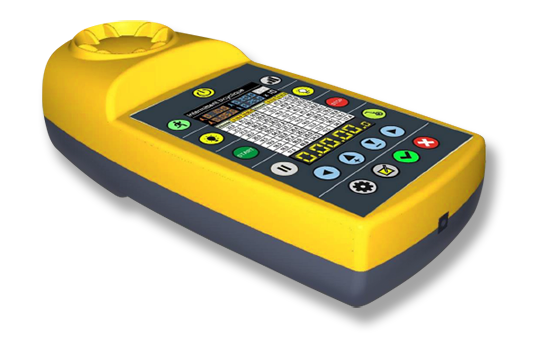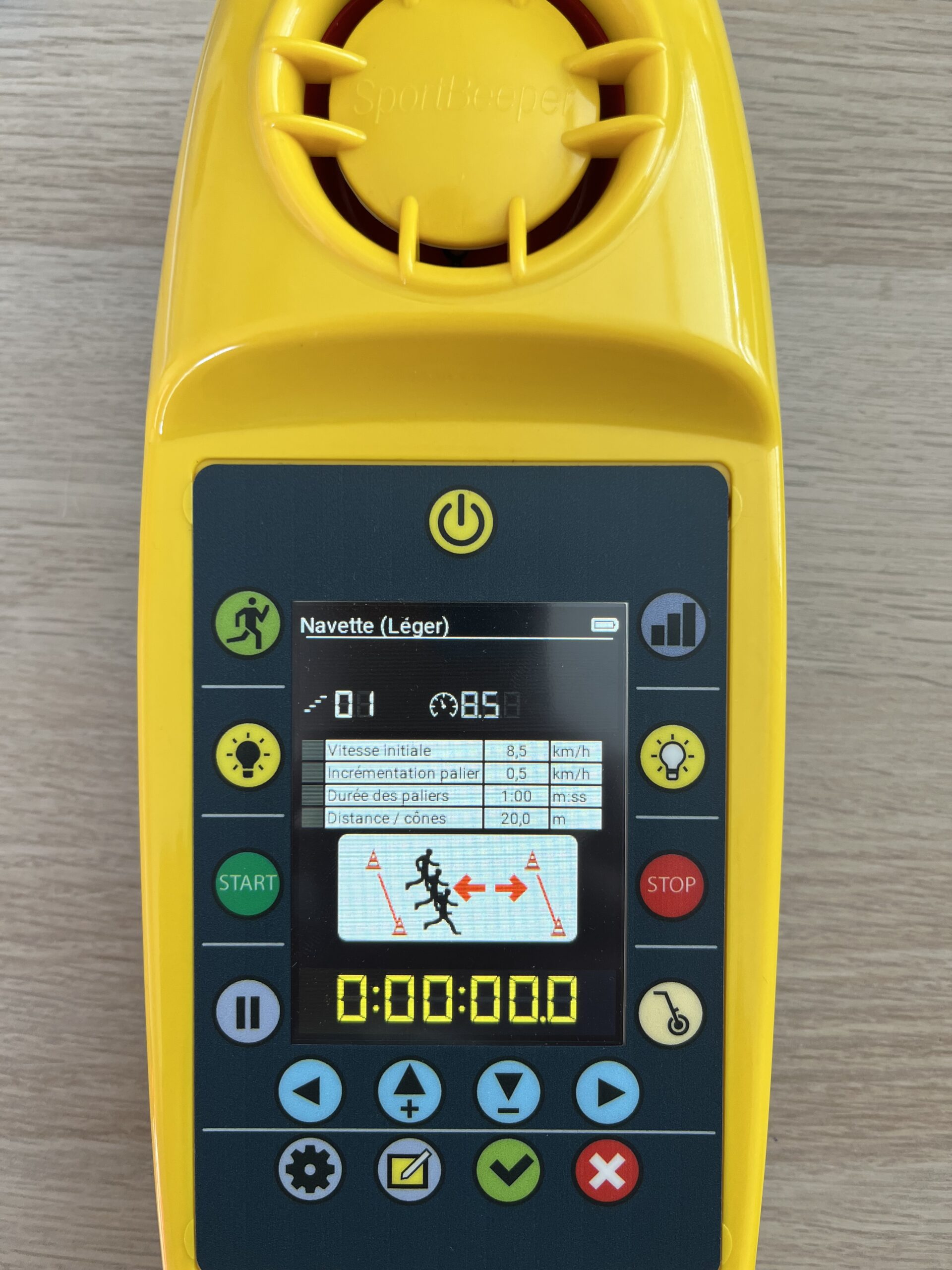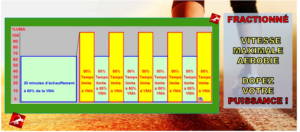The Navette Luc-Léger test
In this article, we take a look at a fundamental tool in the field of physical preparation: the Navette Luc-Léger test. This test is widely recognized and used to assess an individual’s VMA (Maximum Aerobic Speed), as is the VAMEVAL test. Knowledge of VMA is crucial for any fitness trainer or sports coach, as it enables training to be tailored to the specific abilities of each athlete.
The main aim of this individualization is to help athletes progress while minimizing the risk of injury. It is essential to take into account the individual characteristics of the participants, such as their age and their capacity to excel, in order to interpret the test results appropriately.
Without doubt, the world’s most famous VMA test is also sometimes referred to as the “BEEP TEST”! This name comes from the beeping sound emitted at regular intervals during the test, signalling to participants when it’s time to move from one end of the track to the other at increasing speed.
This test, often dreaded by athletes because of its demanding nature, is a valuable tool for assessing an individual’s physical condition and aerobic capacity. It consists of a series of short-distance runs at progressively faster speeds, until the participant reaches his or her maximum fatigue threshold. The results of the test are then used to calculate VMA, a crucial measure in planning endurance training programs.
1. Equipment required :
- 20-meter lane
- Soundtrack ( Sportbeeper)
2.Test procedure :
The Luc-Léger Shuttle Test, also known as the “BEEP TEST” or “shuttle run test”, is a continuous progressive VMA test that starts at a speed of 8.5 km/h. Unlike some other VMA tests, there is no recovery time between stages, which means that participants must maintain a constant pace throughout the test.
Each level lasts one minute, and speed increases progressively with each new level, in increments of 0.5 km/h. This means that every minute that elapses, participants must cross the start line before the buzzer sounds. This creates constant pressure to maintain pace and adapt to increasing speed.
The aim is to complete as many round trips as possible between the two racing lines, thereby validating as many landings as possible. Each time they succeed in crossing the line before the acoustic signal, they advance to the next level.
The test ends when the athlete decides to give up or is unable to cross the line before the acoustic signal for two consecutive repetitions. In this case, the last validated step is recorded as the final test score.
The accuracy of the Navette Luc-Léger test lies in its ability to assess VMA reliably and effectively, testing both endurance and speed in increasingly demanding conditions. It is widely used in sport and fitness to assess athletes’ progress and adapt training programs accordingly.
3.Advantages/disadvantages
Advantages:
Firstly, set-up is fairly quick and easy.
The test can be used just about anywhere. In fact, since all we need is a 20-meter corridor, the test can be performed both indoors and outdoors. There’s no need for an athletics track.
Disadvantages :
The main disadvantage of the Luc Léger Navette test lies in its round-trip format. This characteristic can pose several challenges for participants. Firstly, the continuous back-and-forth movement over short distances of 20 meters can be demotivating and energy-consuming. The frequent need to accelerate, brake, and restart at each end of the course can lead to a rapid onset of fatigue, particularly as the test progresses and the speed increases.
Furthermore, the round-trip format of the test may put certain individuals at a disadvantage. Heavier individuals, for example, may find it more difficult to accelerate and decelerate repeatedly over short distances. The additional effort required to change direction and overcome inertia can lead to quicker fatigue and potentially lower performance compared to lighter individuals.
Considering these drawbacks, it becomes evident that an alternative approach is needed to optimize the testing experience and ensure accurate assessment of participants’ VMA. This is where the Sportbeeper comes into play. The Sportbeeper is a specialized tool designed specifically for conducting the Luc Léger Navette test. It eliminates the need for participants to manually track their progress between the shuttle runs, as it emits a clear and consistent audio signal at each interval.
By using the Sportbeeper, participants can focus solely on maintaining their pace and reaching the designated markers, without the distraction of having to time their runs or listen for cues from a stopwatch. This not only streamlines the testing process but also minimizes the potential for errors and discrepancies in the results.
The Sportbeeper is therefore the ideal equipment for your Luc Léger Navette test.



